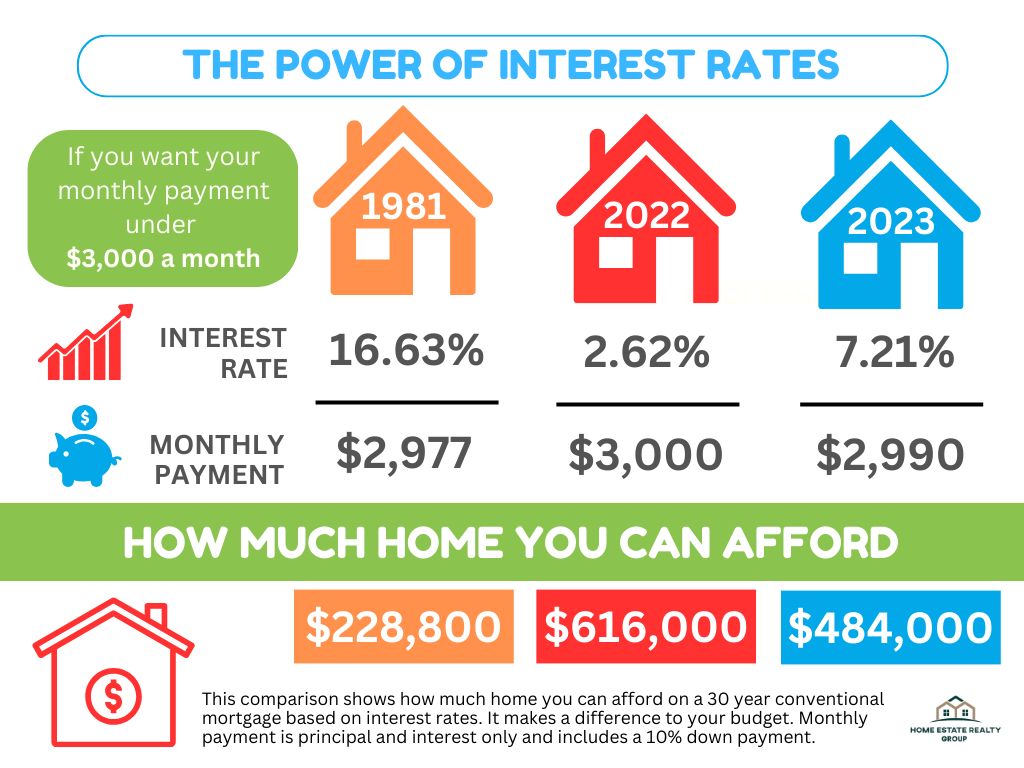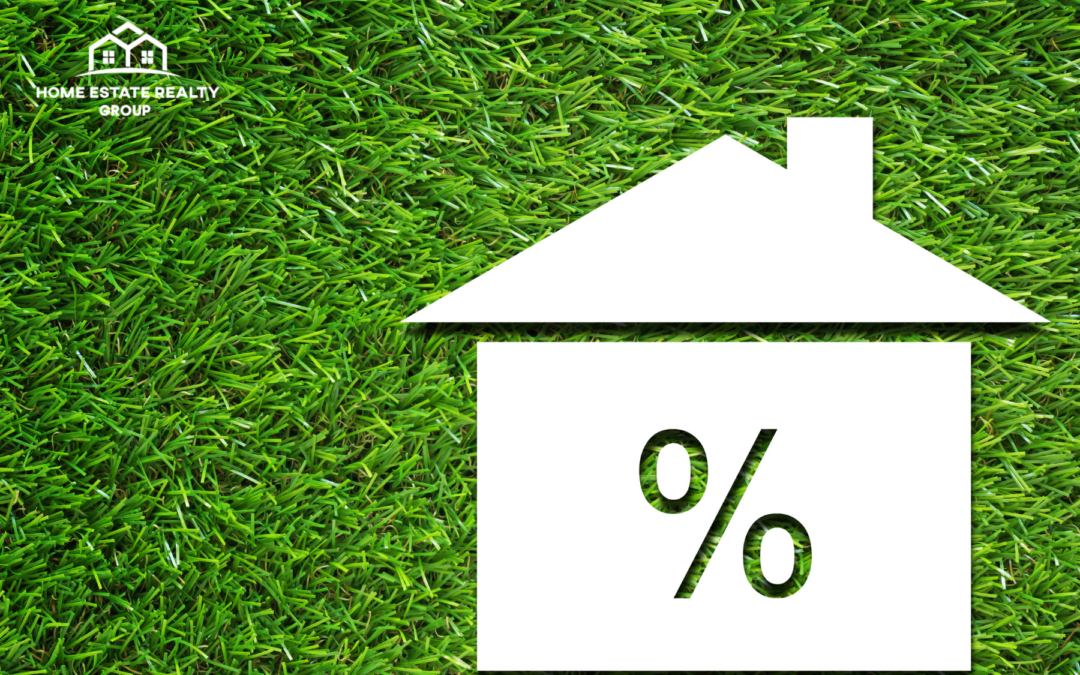Interest rates started increasing in March 2022 and hasn’t stopped since. Rates went from below 3% to above 3% in June 2022 to 5% in May 2023. This month, September 2023, interest rates are hovering around 7%. Northern Virginia has been affected. Here’s how.
MORTAGE AFFORDABILITY
The Federal Reserve raised the federal funds rate, which in turn raised mortgage interest rates, to slow down the rate of inflation (the rate at which the cost of goods and services go up in price). In general, this tactic worked to bring inflation down from 8.5% in March 2022 (when they started raising rates) to 3.18% in July 2023. The target inflation rate is 2% so the likelihood of the Federal Reserve raising interest rates again are high. Most experts believe rates through the end of the year will remain in the 6.5% to 7.5% range.
Higher interest rates increase the cost of borrowing money, resulting in higher monthly mortgage payments. This can reduce the purchasing power of potential homebuyers, making homes less affordable than they would be with lower interest rates. The graphic below illustrates how much home a buyer could afford based on different rates we’ve experienced throughout the years. In 2022, when the rate was in the 2% range, someone wanting to keep their monthly payment around $3,000 could afford to buy a home for about $600,000. In 1981, when the rates were closer to 17%, a home buyer could only afford a home costing about $220,000.

This has affected housing affordability for many, especially if they were looking at homes in the $600,000 range just last year and now realize their home could only cost about $480,000. This compounded with the higher prices of homes explains one reason the housing market sales have declined. Still, for those with the cash reserves, buying a home now is more advantageous than continuing to rent. The rationale is to refinance at get a lower interest rate once they go down. These buyers understand the true wealth building ability that homeownership comes with.
HOUSING SUPPLY
Higher interest rates also discourage home owners from selling their properties. According to Inman, about 92% of homeowners have interest rates below 6%. While many owners may want to downsize or move, they do not want to give up their current lower interest rate for a rate around 7% today. So who are selling homes?
Homeowners with little or no remaining balance on their current mortgage are in a great position to net more cash in this current market. With little competition of homes for sale, they are likely to receive multiple offers over asking and with few conditions. They then use the net profits to purchase another home. With so much cash as a down payment, they need to borrow less money from the bank, thus keeping monthly payments minimal. Their next step is just to wait for the interest rates to fall again before refinancing and locking in a better rate.
The other group of homeowners selling are those whose life circumstances require a sale sooner rather than later. This includes moving to another state for work or family; the unfortunate circumstance of losing employment and not being able to afford their home anymore; and divorce requiring the separation of marital assets. Higher interest rates discourage many from selling their homes in this market. Still, there is an opportunity for others with more equity in their homes to enjoy the current seller’s market.
HOUSING DEMAND
One of the biggest concerns in real estate was that home shoppers would be discouraged by the higher interest rates. In general, lower interest rates encourage borrowing to buy a home. Higher interest rates make buyers less inclined to want to buy. Still, this was the surprise of many when mortgage interest rates went up. After an initial shock, home buyers continued looking for the dream homes. The constant pursuit of buyers and the lack of inventory is what is keeping a strong sellers market in Northern Virginia. Those wanting to sell their homes now are reaping the benefits. Multiple offer situations and less conditions such as home inspection and appraisal waivers are still common in sought-after areas and for homes in great condition and priced well. With its proximity to the nations capital and entertainment areas, strong job market, great schools, and community amenities, Northern Virginia remains in demand.
According to Bright MLS Home Demand Index, buyer demand in Northern Virginia ranges from “Slow” to “High” depending on the area. The Bright MLS | T3 Home Demand Index measures and tracks consumer and real estate professional behavior related to shopping for real estate. They look at metrics such as views of homes online and in-person showings. Ratings are categorized into 5 score points: Limited (under 70 points), Slow (70-89), Steady (90-109), Moderate (110-129), and High demand (over 130). For the month of August, the highest ranking areas in Northern Virginia are: HIGH DEMAND in Manassas City (141), MODERATE DEMAND in Alexandria (135), Arlington (129); STEADY in Falls Church (109); MODERATE in Prince William County (108) and Stafford County (92).
It’s important to note that the relationship between interest rates and housing is complex and can be influenced by various factors. This includes economic conditions, government policies, and market dynamics. National headlines on the housing market does not apply to every state. Real estate is VERY LOCAL and in some cases HYPER LOCAL. Homes selling in one neighborhood may differ completely from home just across the street.
HOME PRICES
The goal of the Federal Reserve is raising rates is to bring the cost of goods and services under control. It should bring the price of homes down. This was not happening in Northern Virginia since March 2022. As inventory went down and competition went up, home prices also went up for over a year and a half. Home prices in Northern Virginia are just beginning to slow now. According to our last market update, the median sale price of a home in Northern Virginia at the end of July was $ 650,000. This was up 5% from the previous year and down 2% from the previous month.
This was only the second time this year that home prices fell month over month. At the end of June 2023, home prices fell 1% from what they were in May 2023. Every other month before that, home prices kept going higher and higher. So it seems that higher interest rates are slowing higher prices in Northern Virginia, at least for now.
BOTTOM LINE
Regardless of what the Federal Reserve is doing to curb inflation, the housing market in 2023 in Northern Virginia is not complying with all the norms. Housing affordability and supply are affecting home buyers but not enough to extinguish their demand for homes. Buyers have a willingness to pay over asking price and lose some home contingencies in the process. Due to its ideal location, better paying jobs, and buyer demand, Northern Virginia maintains a strong housing market with no sign of significant changes.


